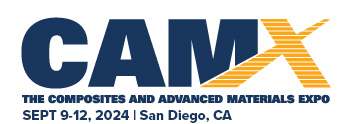Panel of students discuss the growth and potential of the composites industry
September 29, 2016 (Anaheim, Calif.) The third annual CAMX – The Composites and Advanced Materials Expo, the composites and advanced materials industry’s premier conference and trade show, concluded with a luncheon featuring a panel of students who offered their insights on how advances in composites are changing the world.
One of the students on the panel, Caleb Lystrup, a PhD student at Brigham Young University, believes there is an overwhelming amount of exciting work being done in the industry that young professionals should want to be a part of.
“There are so many awesome projects,” Lystrup said. “A couple that come to mind are lightweight skyscrapers made with iso-truss reinforcements and high performance vehicles that are made at a low cost and with eco-friendly processes out of composites.” He is excited about the trend toward increased out-of-autoclave manufacturing, where manufacturers get “awesome parts at a fraction of the cost.”
Another panelist, Kristin Hardin, a PhD student at The University of Alabama at Birmingham (UAB), said that while composites have become widespread and used for incredible things, there is even greater potential for the industry moving forward if businesses embrace sustainability.
“Twenty years from now, I really do hope we have a robust recycling system in place, like familiar plastics and metals do right now,” Hardin said. “Finding a labeling system and how to collect that material and having a database out there presents a great opportunity for industry collaboration.”
Thomas Nanni, a senior at the University of Miami, echoed Hardin’s sentiments, saying that if the industry works toward sustainability, it can “come into the world as a field that’s already green instead of an existing field that needs to become green.”
The panelists also discussed what students and young professionals are looking for from a potential employer. Hardin noted that employers need to take investment in young talent seriously, and that whether businesses like it or not, young innovators represents the future and vitality of the industry.
“I really like an environment that fosters creativity from the bottom up as well as from the top down, and also an employer that promotes education and growth for their employees through education programs and further education opportunities,” Hardin said. “I’d also like to see an employer that promotes diversity.”

